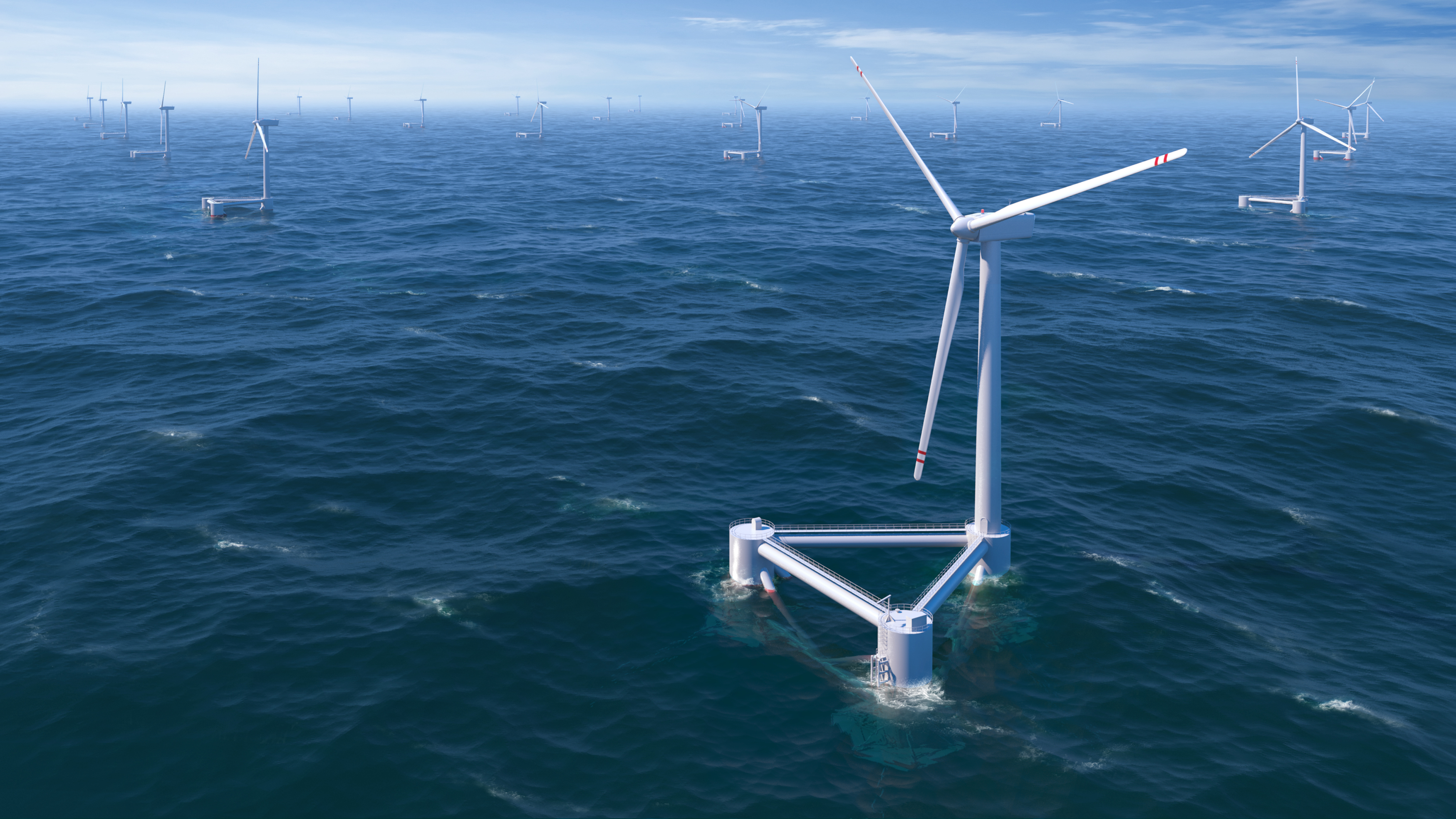Offshore Wind “Backbone” Project Moves Ahead
An ambitious power transmission line project to tap the offshore wind resource off the east coast U.S. is taking steps toward actual construction.

A consortium of companies called the Atlantic Wind Connection this week said it intends to lay transmission lines about 12 miles off the coast of New Jersey as the first phase of a multi-year plan. Today it said Bechtel was chosen as the engineering and design contractor and Alstom as technical advisor.
The ten-year project would bring an undersea high-voltage direct current network for transferring power from offshore wind turbines located from Maryland to New Jersey to the on-shore transmission network. Having transmission lines in place will provide the infrastructure to attract offshore wind developers and allow New Jersey to take advantage of its offshore wind resource at a lower cost, Atlantic Wind Connection says.
The New Jersey link project will use high-voltage direct current technology, which is considered essential to exploiting renewable energy sources at large scale. Direct current transmission lines are a more economic way to carry power over long distances, such transferring solar power from the desert or offshore wind, to cities and other load centers. (See, ABB Advance Makes Renewable-Energy Supergrids Practical.)
Alstom will supply the equipment to convert between alternating current, which is used through most of the electricity grid, and direct current. Most wind turbines today connect to the AC grid at 34.5 kV, an Atlantic Wind representative explained. In this projet, there will be a series of offshore converter stations to convert the alternating current from turbines into DC and step the voltage up to 320 kV for transmission to the onshore grid, where it will be converted back to AC.
The announcements are a sign that the offshore wind “backbone” project, first announced in 2010, is moving beyond initial planning stages. Transmission project developer Trans-Elect heads up Atlantic Wind Connection. Atlantic Grid Development is the project developer and Google, private equity fund Bregal Energy, Japanese conglomerate Marubeni Corp, and Belgian transmission operator Elia are investors.
Atlantic Wind Connection says the main cable buried under the ocean will be able to carry 3,000 megawatts of power. That’s a few times larger than a full size power plant, although the output of wind farms is not consistent as nuclear or fossil fuel plants are. The company says it plans to begin construction and put the first New Jersey phase into service in 2019. In addition to carrying wind onshore, the network will provide alternate routes to the land transmission network and improve the reliability of New Jersey’s grid.
The proposed transmission line, called the New Jersey Energy Link, will need to be approved by regulators and the cost recovered by rate payers, the same way that other regulated lines are paid for, explained Trans-Elect CEO Bob Mitchell.
The company is moving ahead now to secure support from the state government and include the transmission lines as part of the regional planning process. “Once it is built, it will be able to move power north to supply power where and when it is needed. This relief of congestion will cause prices to be lowered—it will be adding supply when there is demand,” Mitchell says.
Lack of transmission has been a bottleneck for large onshore wind farm projects and establishing a transmission backbone in place would greatly simplify offshore wind development.
Winds in the ocean are stronger and steadier but the U.S. doesn’t have any offshore wind for technical, regulatory, and financial reasons. (See, DOE Grants Try to Crack the Code on Offshore Wind.) The Department of Energy estimates that the U.S. has 4,000 gigawatts of offshore wind available, or four time the country’s current generating capacity.
Keep Reading
Most Popular
Large language models can do jaw-dropping things. But nobody knows exactly why.
And that's a problem. Figuring it out is one of the biggest scientific puzzles of our time and a crucial step towards controlling more powerful future models.
The problem with plug-in hybrids? Their drivers.
Plug-in hybrids are often sold as a transition to EVs, but new data from Europe shows we’re still underestimating the emissions they produce.
Google DeepMind’s new generative model makes Super Mario–like games from scratch
Genie learns how to control games by watching hours and hours of video. It could help train next-gen robots too.
How scientists traced a mysterious covid case back to six toilets
When wastewater surveillance turns into a hunt for a single infected individual, the ethics get tricky.
Stay connected
Get the latest updates from
MIT Technology Review
Discover special offers, top stories, upcoming events, and more.